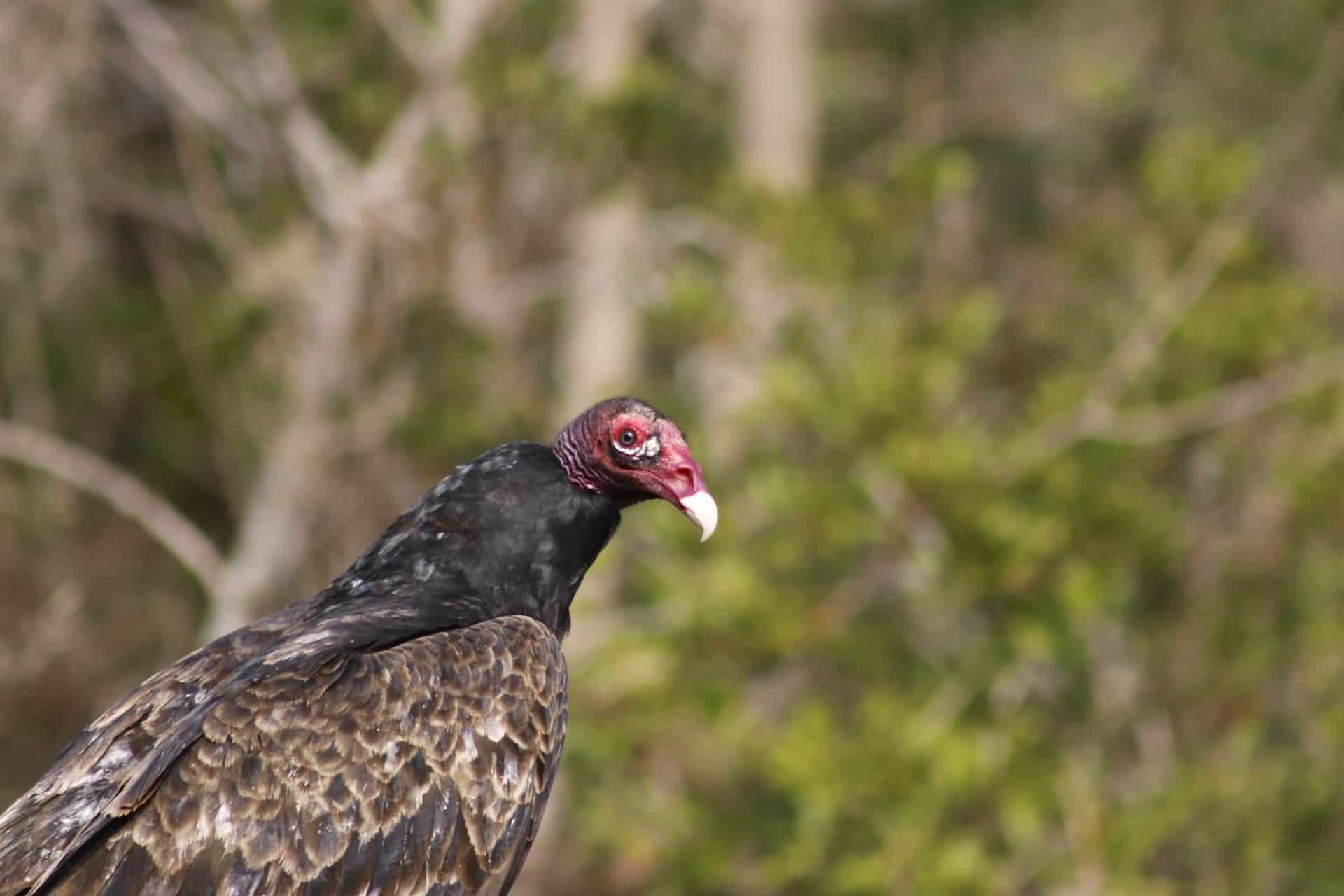Birds
Turkey Vulture
Cathartes aura

Voice: Lacks vocal organs; low, husky hiss
The contrasting light and dark, long-winged V form of turkey vultures are a familiar sight circling in flight over Northeast Ohio. Their ability to ride thermals, a form of atmospheric updraft, enables them to move from one destination to another. Tukey vultures are commonly found in open areas such as roadsides, suburbs, mixed farmlands and forests. They can also be found at food sources such as landfills, trash mounds and construction sites. At night, they roost in trees, on rock ledges and in other high secluded areas.
Turkey vultures are a talented scavengers with acute vision and an exceptional sense of smell. Experts estimate they can detect the scent of rotting flesh in concentrations as a few parts per billion over a mile away. Their sense of smell is so remarkable they can even locate hidden food such as a dead mouse under a pile of leaves. They feed mainly on fresh carrion –primarily mammals. However they are not above eating decaying reptiles, birds, amphibians, fish, and invertebrates. Several turkey vultures may gather at a carcass but usually only one feeds at a time. Turkey vultures almost never attack living prey, unlike their relatives the black vulture. Theyhave excellent immune systems, and do not contract botulism, anthrax, cholera or salmonella commonly found on rotting flesh.
Turkey vultures build incomplete nests, located in sheltered sites isolated from human traffic or disturbance, including rock crevices, caves, ledges, thickets, mammal burrows, abandoned bird nests and abandoned buildings. Turkey vultures make their nest by scraping out a spot in the soil, leaf litter or vegetation and by pulling aside obstacles to lay their eggs. Nest sites may be used repeatedly for a decade or more.
Mid- late April female turkey vultures lay usually two, sometimes one, rarely three whitish, brown and purple spotted eggs. Both parents incubate the eggs for 34-41 days. Once the eggs hatch both parents feed young by regurgitation. Chicks fledge the nest in 60-84 days.
Thought to have declined during 20th century in parts of North America, due to pesticides, today turkey vulture numbers have increased across North America, according to the North American Breeding Bird Survey. Partners in Flight estimates a global breeding population of 18 million. Currently the local population are threatened by side-effects of poison or lead in dead animals. Other threats include trapping and killing for fear of spreading disease.
Color: Dark brown with a featherless red head and a pale bill; undersides flight feathers light colored
Range: Year-round southern United States; north migrate as far as South America.
Size: 25.2–31.9"
Wingspan: 66.9–70.1"



